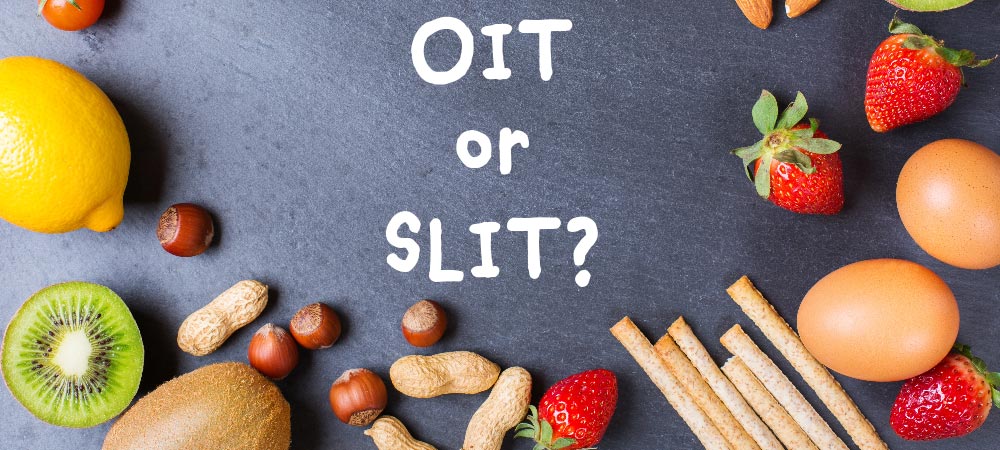What’s the difference between OIT and SLIT?

Oral Immunotherapy, or OIT, and Sublingual Immunotherapy (SLIT), are often talked about as treatments for food allergy. Each treatment has benefits, but they are different approaches. Let’s talk about how they differ, and how that can impact which approach to choose.
The only way to treat the cause of allergies is through immunotherapy, where tiny doses of the substance the patient is allergic to are given in increasing amounts until the body learns to tolerate it. Immunotherapy teaches the body to not react to problematic allergens.
OIT and SLIT are two popular options that don’t involve an injection. Both are taken orally — through the mouth — but there are some major differences in the treatment and safety profile.
OIT
OIT is typically a capsule or powder that is swallowed daily, slowly introducing the body to the offending allergen. With this treatment, antigen from one food is in each pill or powder. Typically, once tolerance to that food is built over time, patients may opt to treat another. Some customized protocols treat more than one food simultaneously in each dose. The maintenance dose is usually 300 to 3,000 milligrams of antigen.
The most common side effect of OIT is mouth itching, but more serious side effects have been reported. Effects on breathing and gastrointestinal symptoms are common, and epinephrine has been administered for severe reactions with this treatment. Exercise is restricted for 30 minutes after each dose.
SLIT
SLIT for foods is a liquid drop that is taken under the tongue. Due to certain cells under the tongue, this is a “privileged site” for helping the body gain tolerance to substances — therefore the amount of allergen needed to build tolerance is less. Only about 3-5 milligrams of antigen are used per dose, compared to the 300-3,000 milligrams used in OIT.
With SLIT following the La Crosse Method™ Protocol, the treatment is unique to each individual patient and their specific level of sensitivity. Because the treatment is personalized, multiple food allergies can be treated at one time.
Research shows that the personalization and the use of less antigen increases the safety profile of SLIT treatment. The use of epinephrine for a life-threatening reaction has not been reported with this conservative protocol — the most common side effect is mouth itching, and it usually resolves itself over time.
Patients typically take SLIT for three to five years until tolerance is built, though patients with more complex food allergies may continue treatment indefinitely.
Finding the right treatment for you
It’s important to learn about all your options for food allergy treatment. This presentation by Allergychoices’ Medical Advisor, Dr. Mary Morris, shares research and data comparing the two treatments.
Patients with severe food allergies need incredibly careful initiation and dose increases in an allergy clinic with added training and experience in treating severe food allergies.
If SLIT seems like a treatment option for you, find a provider near you that reports offering testing and treatment following the La Crosse Method and get on the path to safely feeling better.


